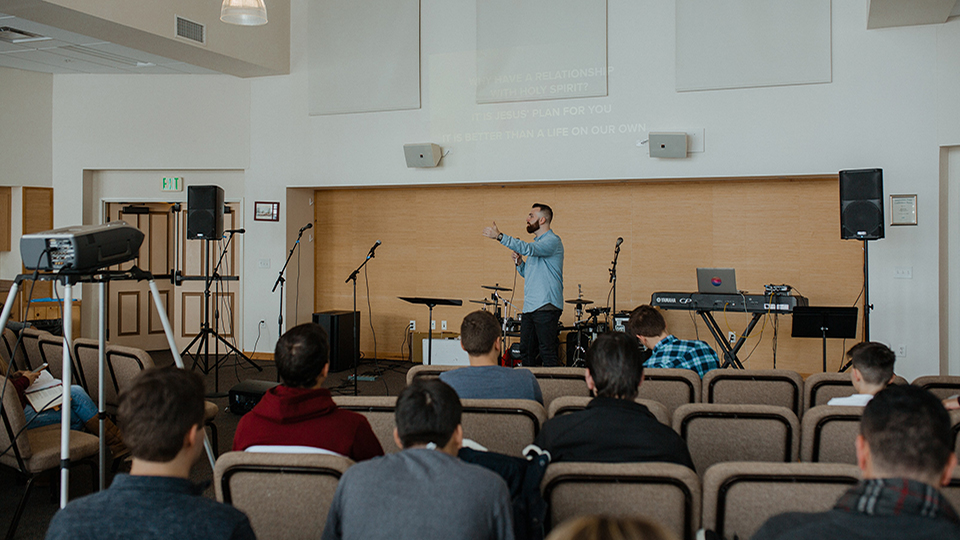
We have already seen the two steps a pastor must take to help the congregation get stronger – self-growth and build a team . But there are also two steps the people of the church must take to contribute to the same health journey. Many congregants know the frustration of a revolving door of pastors with their unique visions, ideas, and strategies. A frequent change in pastors can lead the congregation to forget that they, too, have some responsibility for what their church is becoming.
Click here to read Part 1 of this series, Two Steps to a Healthy Church .
Frankly, it’s easier to sit back and wait for the new pastor to prove themselves or to come up with the right plan that can lead us forward. But churches that move toward health have discovered that the people must get involved and contribute to the new day, often just as much as the pastor. There are at two things that only the people can bring to this equation.
Let’s look at the people’s two things..
1. The readiness to face reality.
Well over half of America’s churches have plateaued or are in decline and the moral drift of our culture is away from the influence of the church more and more each year. Things simply aren’t going to get better at our church unless some intentional steps are taken.
Leadership gurus call it urgency–the “what” that motivates us to see the need for change in our church if we are going to succeed in ways we aren’t succeeding now. Most have heard insanity’s definition–doing what you’ve always done and expecting different results. But, sadly, many congregations seem content to maintain failing ministries and practices that no longer connect with their community. Perhaps like nowhere else in our culture, failure is acceptable at church as long as the remaining members are happy.
I often speak of four questions a church must say “yes” to before a new day of health can emerge –
- Do we know we need to change?
- Are we willing to change?
- Do we know how to change?
- Are we willing to do that?
I am always amazed at how unwilling a declining church can be to say “ yes ” to those first two.. Honestly, having the right answer to question three doesn’t matter if you can’t get a “ yes ” to the first two.
Yes, we like our church and we like the way things are done at our church. That’s a big part of why we find ourselves attending our church. But if the way we do things isn’t helping us fulfill our mission of reaching people for Christ, are we willing to face that reality? Many aren’t.
Even the most amazing pastors can’t help a church get healthy if the people won’t look clearly at the need.
Now, facing reality doesn’t have to mean we take on a “doom and gloom” spirit. Instead, ours should be a determination to fulfill our mission, one that is willing to shift gears if necessary, to get back up that hill. Jesus established His Church not to simply be about us, but to be a vehicle through which we can be about the “them” currently outside our walls. This brings us to our next step..
2. Create an embracing environment.
Now, I’m a church kid. I have so much experience walking into churches that I seldom feel confused or uncertain as to what to do. But I’m the exception. The extremely rare exception. In fact, I’m the dinosaur of church life. People like me just don’t exist anymore. Instead, an entire culture drifts into a worship service with absolutely no knowledge of what to do or what will happen. And if we treat them the way many churches have treated me, well…
As a guest, I can tell whether or not the people of the church want me there, have any interest in knowing me, or could ever care about my life. I can make that judgment in minutes. Now that may not seem fair, but that’s what your guests do every week.
Where are the people who love people? Where are friendly folks who have a hope that their church might grow? Is the pastor the only guy hoping for that?
Each week, the people of the church create an atmosphere for the guest experience.
I’m not talking about making sure the greeters all showed up or have their cues down pat. If welcoming new people is someone else’s job, then my church is failing at it. Now I’m all for trained greeters and the systems we put in place to extend a good first impression, but friendly people–genuinely friendly people–create the best environment.
Sadly, in many struggling churches, the members come in each week more concerned about themselves than their church. They wonder if they’ll see their friend or if someone will notice their new outfit, or if the pastor’s sermon will be what they need. And they wonder why the pastor isn’t growing their church. Maybe he’s just not doing a good job..
In the church I pastored, we did a little experiment. I asked 40 people to commit to a six-month challenge. Each week, when they attended the weekend service of their choice, I asked them to do three things:
- MEET someone they had never met
- PRAY for someone or promise to pray for them when they heard or saw a need
- HELP someone in even the simplest way (carry a diaper bag, point out restrooms, etc)
We called it MPH and thought such an effort would help us “pick up speed” in becoming the church we wanted to be. We even filled out cards each week, listing the names of those we met, prayed for, and helped.
The impact was unbelievable!
During those six months, the church became one of the friendliest places I’ve ever been. I never saw a guest by themselves. New people were making friends faster than they could have hoped.
In fact, a year later (we tracked it) our visitor retention rate more than doubled. 48% of those who visited are church in that 6-month period were actively attending and involved in the life of the church one year later.
When we are intentionally friendly, good things happen. People want to be in those places where they feel cared about and see the potential for friendships.
If there was a guest at your church last week, and you didn’t meet them…you dropped the ball! Does that seem harsh? I’m not trying to offend you, but if a family came to your house for dinner and you didn’t speak to them, you’re wife would be furious at you! Why is that someone else’s job when that same family comes to your church?
Creating an embracing environment is one step that the people of the congregation can take to demonstrate their desire to see their church grow. It’s their most powerful step. So get some people together and start figuring out how to do it.
After we face the reality of our declining church, most of us immediately want to know what to do. Well, here it is…create an embracing environment in your church. The two churches I pastored experienced remarkable turnarounds and growth. I’m convinced this was a direct result of the people taking their two steps.
Want more ThoughtHub content?
Join the 3000+ people who receive our newsletter.
*ThoughtHub is provided by SAGU, a private Christian university offering more than 60 Christ-centered academic programs – associates, bachelor’s and master’s and doctorate degrees in liberal arts and bible and church ministries.



